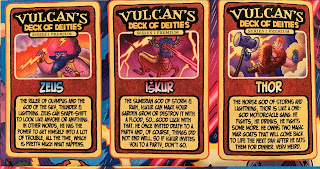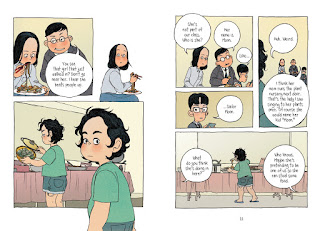The title story is a great example of what this book entails. It is a tale of Ebony, as a fifth grade girl who wants to have her hair permed because she thinks it will stop her classmates from teasing her. She finally convinces her mother to let her do it, and what follows is a complex web of emotions. Her mother is ambivalent, against her daughter messing with her natural hair but also capitulating, and also saddened by her growing up and becoming more independent. Ebony gets her world broadened with her experiences at the beauty shop, learning more about how to take care of her hair and also about how people talk to each other there. She is excited but also surprised by how painful and laborious the process is. Also, she just can't keep from touching her newly transformed hair.
It seems that both Ebony and her mom pay some price from the perm, and what becomes painful for Ebony is that all her efforts do not pan out as she expected at school. This story works in multiple ways, as a coming of age tale, as a family relationship story, and even as a contemporary fable. It is packed with emotion, humor, and humanity, and it introduces the reader to a great many themes that crop up in the following stories.
Other stories in this volume include "Big Ma," "My Lil Sister Lena," and the generational tensions of "Sisters and Daughters." They are all noteworthy for how many emotional and cultural issues they touch upon. The "Lena" story in particular, about how her sister was the only black girl on her swim team and was dramatically changed by her teammates' attention to how her hair changed when it got wet. They all invaded her privacy and space and were compelled to touch it, which created a sense of anxiety that manifested in self-harm.
As you can see from the excerpts, the art here is packed with all sorts of energy. This book has an emotional wallop, and I love how it plays with line work that is sometime simple and strong and other times tangled and complex (like hair!). Also there are framing images, parody ads for various hair care products that act as interstitials that inform the identity politics of the stories. They show how central and varied the seemingly mundane matter of hair care is for these characters. And how much pressure there is to alter themselves to conform to constructed ideals of beauty.
This book's creator Ebony Flowers is a cartoonist, ethnographer, and teacher. One of her mentors along the way was Lynda Barry, one of the greatest comics creators in my opinion, and I feel that her work packs as much a punch as Barry's, in spirit and not in any derivative way. She has won a Rona Jaffe Foundation Writers' Award, and she speaks about her work on Hot Comb in this interview as well as this one.
All of the reviews I have read about this book have been full of acclaim. In a starred review Publishers Weekly called is a book "rich with both sorrow and celebration." John Seven wrote, "What makes it so special is the way she wraps these elements around larger themes of race without ever making you feel like you are reading A Very Important Work With A Heavy Purpose." In a starred review from School Library Journal, Desiree Thomas summed it up, "Ideal for most public and school libraries." Paul Lai also has lots of great insights in this podcast episode.
Hot Comb was published by Drawn & Quarterly, and they offer a preview and more info about it here.














